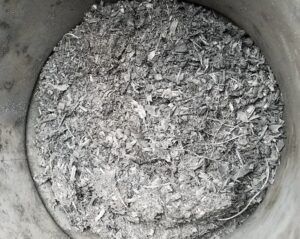The first round (2018 spring) of pilot system operations at our cooperating farms was successful. Against The Grain (ATG) farm produced more than 30 batches of biochar using various agricultural waste produced on site including sorghum, woody waste, and animal bone. The biochar kiln is capable of producing 7-11 lb of biochar per each kiln operation with an average of 43,000 Btu of heat energy collected. Combined with solar energy collected through a 50-tube solar collector, ATG farm could collect as much as 72,000Btu per day. The root zone heating system efficiently delivered heat to the soil keeping its temperature around 60-65 degF for growth and 70-75degF for germination at Springhouse farm. The root zone heating system combined with solar energy has helped Springhouse farm save half of its propane gas compared to the previous year.
Our partner farms are getting ready for another cold season. Springhouse farm will be ready to maximize its capability to save propane by operating biochar kiln with biomass grown on site: sorghum-sudan grass hybrid. ATG farm will have an extra heating element submerging in the water tank, so the water tank will keep above 90degF all the time to provide sufficient heat to the vertical root zone heating system for germination.

Fig 1. Pyrolysis process produces syngas and is burnt immediately to produce heat.

Fig 2. Produced biochar.

Fig 3. Vertical germination racks at ATG are heated by solar energy and collected heat from the biochar kiln.

Fig 4. Thermal image of root zone heating system at Springhouse farm.

Fig 5. Crops grow on the root zone heating bench.
Cooking with Home Biogas
The Nexus research group with help from students in the Biofuels Technology course have installed a unique small-scale biodigester to convert organic waste into cooking fuel and fertilizer. The system is located inside the Nexus greenhouse facility at the Watauga County Landfill. The Homebiogas system was developed by an Israeli start-up company to create an appliance to turn household waste into energy. Sustainable Technology Associate Professor Dr. Jim Houser visited Homebiogas in Israel earlier this year to develop a relationship to pursue University related research with the system.
How it Works: A slurry of organic waste (kitchen food scraps, animal manure, and even human manure) is loaded into the funnel to fill bottom bag, the digester.
Biogas Happens: Biogas (primarily methane and carbon dioxide) is produced by anaerobic decomposition of organic wastes. The gas is captured in the top bag and pressurized by the weight of sandbags to force the gas through a carbon filter to remove hydrogen sulfide, and finally to a single-burner stove. There is an isolation valve to close off the gas when not being used. The biogas is currently over 70% methane and burns clean like natural gas or propane. As new organic waste is added, the effluent passes through a chlorine table to ensure pathogen destruction and into a bucket from the outlet pipe. It is nitrogen rich and can be used as a fertilizer.
The Nexus group is currently tracking the digester’s performance by logging temperature, pH, gas production and composition. Future work includes adding biochar to the digester to see the effects on gas production and fertilizer value of the leachate. The group is also interested in research cold climate digestion and installing the equipment in developing communities abroad.

Fig 6. Installed Homebiogas digester in Nexus greenhouse.

Fig 7. Dr. Jeremy Ferrell measures methane concentration and demonstrates boiling water with clean burning biogas.